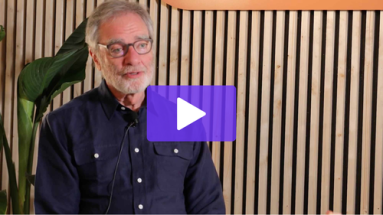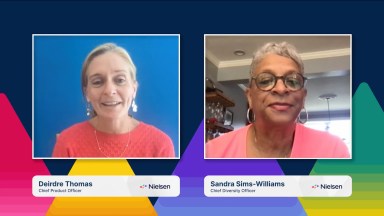As consumers, we increasingly use a variety of mass media. Traditional forms, such as television, still function well on the Polish market, but are slowly being replaced by their online counterparts. Companies face the challenge of reaching the target group in each of the media used and the proper verification of media activities by means of research.
TV STILL IN THE GAME
Television is still an essential part of our lives. Poles spend more than 4 hours a day in front of a TV screen, although in the last 2 years we have been observing a downward trend. Linear television still maintains a strong position in Poland, but this is due to the older age groups. Younger generations do not want to wait for set times to watch their favorite programming and more and more often look for them on the Internet, where they decide for themselves when and what they want to see. In these age groups, we observe a much shorter contact time with traditional television, and also decreasing ranges, i.e. the decreasing number of viewers sitting in front of the television set – comments Justyna Porębska, Digital Projects Manager at Nielsen. This is confirmed by telemetry data, according to which the average daily viewing time, for example in the age group 4-15 decreased by 15 minutes compared to 2015 and by about 20 minutes for the so-called zetek and millennials (Nielsen, TSV 4+, 2015-2017).
Broadcasters are competing in extending the offer for viewers, offering them more and more TV channels every year. Currently, Nielsen monitors 157 TV stations, which is a 30% increase compared to 2012. Nevertheless, we have not noticed an increase in the portfolio of channels watched by one viewer: on average, he turns on 6 different stations a day. About half of the viewers watch 5 or less stations, 10% each watch 1 and 2 stations, and 9% watch 3, 4 and 5 stations (Nielsen Audience Measurement 2017).
By comparison, in the United States, most viewers only watch one or two stations a day. In the last five years, the number of viewers watching just one station a day has doubled. We are also becoming less loyal viewers: the number of programs with a minimum audience of 7% (or 2.5 million people) has fallen threefold in the last 5 years.
TRENDS BEHIND THE GREAT WATER
According to the Nielsen Total Audience Report and Audience Insights Analysis 2018, the average American viewer spends about 82 hours a week consuming content from the mass media (TV, internet and radio). Over the past few years, the number of types of media consumption devices, and in particular digital devices, has also increased. This development has contributed to the emergence of a new business model and new opportunities to reach customers through engaging content and advertising.
While US TV viewing is declining, overall time spent consuming video content, irrespective of the source, is increasing. The weekly time spent watching TV decreased from 8 hours 41 minutes to 7 hours 6 minutes, however the weekly time spent consuming video content in the 18+ population in the United States increased by 20 minutes compared to 2015 and is currently 14 hours and 31 minutes. Video consumption is growing thanks to the increasing popularity of digital video, both short and long. So there is a need to work out ways to measure the purchase and sale of content and digital advertising.
RECIPIENT MULTITASKING
The Nielsen Cross Platform Study Polska survey conducted by Nielsen in September 2017 on a representative group of over a thousand Polish internet users aged all 15+ shows that 58% of surveyed Poles watch TV while using the Internet, and for 39%, multiscreening is on agenda. Most often, these activities connect people aged 15-20 and 30-39.
We use the Internet, in various forms, practically all day long, but the greatest activity is in the late afternoon and early evening. It is also no surprise that we are most active in social media. As for online video, just like linear TV, it is most watched in the evening.
VIDEO ON TWO FRONTS
For years, television has been a black market horse, taking over more than 50% of advertising budgets. Meanwhile, the Internet has conquered the Polish market at an impressive pace, slowly also reducing the share of television in the advertising cake. Only in the last 7 years, with triple-digit increases, the Internet has come second in advertising budgets. In 2010, the internet accounted for 14% of advertising spend, and in 2017 this percentage increased to 32% (according to Starcom data). – It is worth emphasizing the excellent cooperation and complementarity of these two media: TV speed in mass building range and brand awareness, additionally enhanced by digital reaching younger groups and building communication to light TV viewers – this is the most effective connection that marketers should use – emphasizes Justyna Porębska .
CROSS MEASURING THE MEDIA THOSE A CHALLENGE
Cross-media communication is related to the need for reliable measurement that enables the results to be compared between platforms and devices.
The problem faced by the Polish market is the lack of a common measurement of both media, which would allow comparison of the campaign results in each of them, but above all, show a common reach for the entire campaign. Currently, there are measurements on the market that describe the reality of television and the Internet with various indicators, which makes it difficult to compile the data. Nielsen prepared the measurement of advertising campaigns and content on the Internet, based on the identification of audience demographics using big data from an external provider, which minimizes the problem of the precision of measuring even small campaigns in the highly dispersed world of the Internet. Thanks to a device-independent user ID, the survey helps verify frequency and coverage between different devices and platforms. Nielsen’s Online Measurements make it possible to relate the results of an online campaign to the results of a TV campaign by using reliable metrics used in both measures and are a step towards linking TV data with internet data. Such research is already carried out by Nielsen not only in the United States, but also in Europe – incl. in France, Italy, Great Britain and Germany. The problem that the Polish market is struggling with is the lack of a common measurement of both media, which would allow comparison of the campaign results in each of them, but above all, show a common reach for the entire campaign. Currently, there are measurements on the market that describe the reality of television and the Internet with various indicators, which makes it difficult to compile the data. Nielsen prepared the measurement of advertising campaigns and content on the Internet, based on the identification of audience demographics using big data from an external provider, which minimizes the problem of the precision of measuring even small campaigns in the highly dispersed world of the Internet. Thanks to a device-independent user ID, the survey helps verify frequency and coverage between different devices and platforms. Nielsen’s Online Measurements make it possible to relate the results of an online campaign to the results of a TV campaign by using reliable metrics used in both measures and are a step towards linking TV data with internet data. Such research is already carried out by Nielsen not only in the United States, but also in Europe – incl. in France, Italy, Great Britain and Germany.



